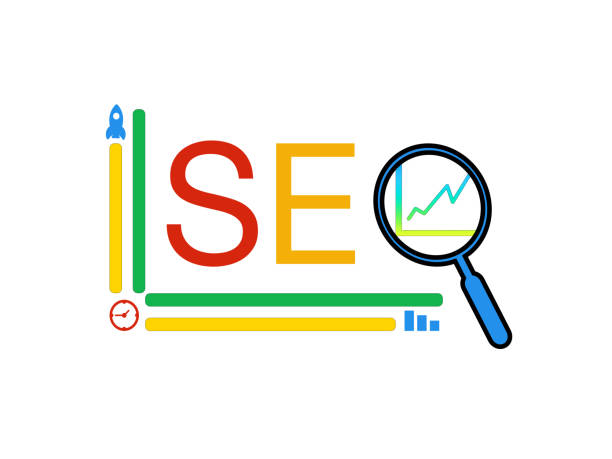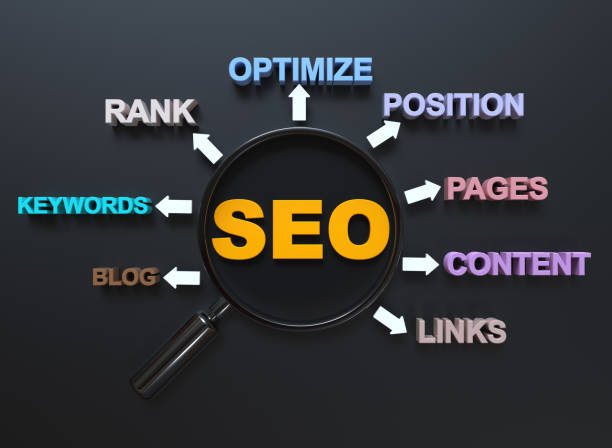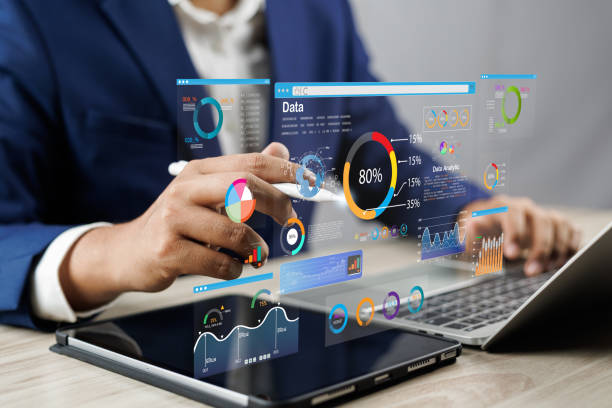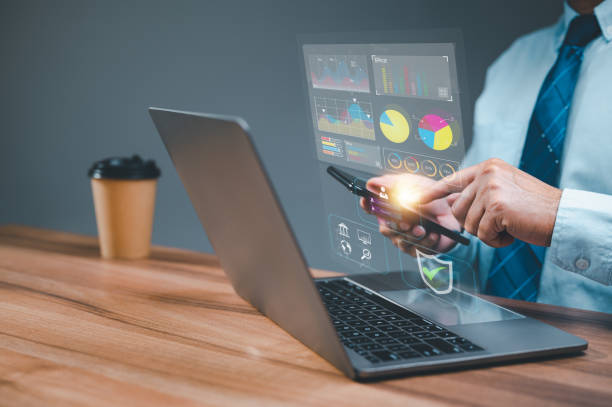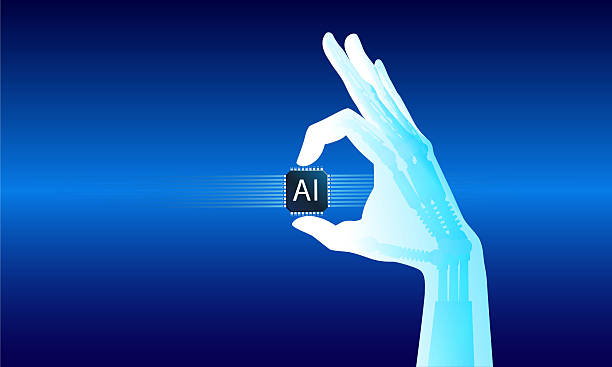What is On-Page SEO and Why Does it Matter?
On-Page SEO, also known as On-Page Optimization, refers to a set of actions you take within your website to improve your ranking in search engine results.
These actions include optimizing content, title tags, meta descriptions, URL structure, and more.
The importance of On-Page SEO stems from the fact that it helps search engines better understand the content of a page and its relevance to the #keywords users are looking for.
Strong On-Page SEO can lead to increased organic traffic, improved user experience, and higher conversion rates.
In fact, On-Page SEO is the first and most important step towards having a successful website.
By optimizing the internal elements of your site, you can significantly increase your chances of being seen in search results.
This means attracting a target audience and increasing sales of your products or services. Good On-Page SEO can help Google better identify your site and give it a better ranking.
In today’s competitive world, On-Page SEO is a necessity.
Websites that do not pay attention to this aspect miss out on many opportunities and ultimately lag behind their competitors.
On-Page SEO helps you have complete control over various aspects of your website, and by making the necessary changes, you can improve your ranking in search results.
Does your company’s website create a professional and lasting first impression on potential customers? Rasawab, with professional corporate website design, not only represents the credibility of your brand but also paves the way for the growth of your business.
✅ Create a powerful and trustworthy brand image
✅ Attract target customers and increase sales
⚡ Get free consultation
Keyword Research: The Cornerstone of On-Page SEO
#Keyword research is the process of identifying the words and phrases that users use to search for information in search engines.
These words and phrases form the core of your SEO strategy and should be used in website content, title tags, meta descriptions, and other important elements.
To conduct keyword research, you can use various tools such as Google Keyword Planner, Ahrefs, and Semrush.
These tools help you find the search volume of different keywords, the level of competition, and related keywords.
When choosing keywords, look for words that have a good search volume and are relevant to your website content.
Also, pay attention to the level of competition for keywords.
High-competition keywords are harder to rank for, so it’s best to use a mix of high and low competition keywords in your strategy.
After selecting keywords, use them naturally and intelligently in your website content.
Avoid overusing keywords, as this can lead to penalties from search engines.
In general, the goal of keyword research is to understand user needs and provide content that best meets those needs.
Optimizing Title Tags and Meta Descriptions
Title tags and meta descriptions are two important elements in On-Page SEO that are displayed in search results.
The title tag is the main title of your page, which is displayed at the top of the search result.
The meta description is a short summary of the page content that is displayed below the title tag.
Optimizing these two elements can have a significant impact on your click-through rate (CTR) and page ranking.
The title tag should be attractive, relevant, and include the main keyword of the page.
The length of the title tag should not exceed 60 characters, otherwise, it will be truncated in search results.
Meta descriptions should also be attractive, relevant, and include a Call to Action.
The length of the meta description should not exceed 160 characters.
By writing attractive and relevant title tags and meta descriptions, you can encourage users to click on your search result and enter your website.
Title tags and meta descriptions send important signals to search engines.
These signals help search engines understand the main topic of the page and rank it correctly in search results.
On-Page SEO can help improve organic traffic and increase conversion rates.
By using appropriate keywords and creating quality content, you can improve your website’s ranking in search results and attract more audiences.
Click here to preview your posts with PRO themes ››
Optimized and SEO-Friendly URL Structure
The URL structure of a website plays an important role in On-Page SEO.
URLs should be short, descriptive, and include the main keyword of the page.
Avoid using long and complex URLs that contain meaningless numbers and letters.
URLs should have a logical and hierarchical structure so that users and search engines can easily navigate your website.
For example, instead of using a URL like example.com/page123, use a URL like example.com/blog/seo-internal.
Using a hyphen (-) to separate words in URLs is recommended.
Also, avoid using uppercase letters in URLs, as this may cause problems in some systems.
An optimized URL structure helps search engines better understand the content of the page and rank it correctly in search results.
A proper URL structure not only helps SEO but also improves user experience.
Clear and understandable URLs help users understand what page they are on and easily access other pages.
On-Page SEO is a long-term investment that can help you achieve your business goals.
By optimizing various elements of your website, you can improve your ranking in search results, attract more traffic, and increase conversion rates.
Are you losing potential customers due to an unprofessional website? Rasawab is your answer! With our specialized corporate website design services:
✅ Enhance the credibility and position of your business
✅ Experience attracting more targeted customers
⚡ Act now to receive a free consultation!
Image Optimization for On-Page SEO
Image optimization is an important aspect of On-Page SEO that is often overlooked.
Images can help improve user experience, visual appeal, and your page ranking.
To optimize images, you should use descriptive filenames that include keywords.
For example, instead of using a filename like IMG1234.jpg, use a filename like seo-internal-guide.jpg.
You should also use the alt tag for images.
The alt tag is an alternative text for the image that is displayed to users if the image is not displayed.
The alt tag should be descriptive, relevant, and include keywords.
In addition, you should reduce the size of the images to increase page loading speed.
You can use various tools to compress images.
Using high-quality images that are relevant to the page content can have a positive impact on SEO and user experience.
A website with optimized images not only loads faster but also helps search engines better understand the content of the page.
Image optimization for On-Page SEO includes choosing the appropriate format (such as JPEG, PNG, or WebP), reducing file size, using descriptive filenames, and adding alternative text (alt text).
These actions help improve page loading speed, accessibility, and ranking in search results.
Quality and Valuable Content: The King of On-Page SEO
Content is the most important factor in On-Page SEO.
Quality and valuable content is content that meets the needs of users, provides accurate information, and is well-written.
Your content should be original, unique, and have added value.
Avoid copying other people’s content, as this can lead to penalties from search engines.
Your content should be well-organized and use appropriate headings, subheadings, paragraphs, and images.
Use keywords naturally and intelligently in your content.
Your content should be up-to-date and fresh.
Regularly update your website content and publish new content.
Quality and valuable content not only helps improve your ranking in search results but also increases user engagement, increases conversion rates, and builds trust.
In fact, quality content is the beating heart of On-Page SEO.
To create engaging and useful content, you need to understand the needs of your audience and produce content that answers their questions and solves their problems.
By providing valuable content, you can attract audiences to your website and turn them into loyal customers.
Internal Linking: A Way to Improve Ranking
Internal linking is the process of creating links between different pages of your website.
Internal linking helps search engines better understand the structure of your website and identify more important pages.
Also, internal linking improves user experience and helps users easily navigate your website.
When creating internal links, look for opportunities to naturally and relevantly link different pages together.
Use descriptive anchor text that includes keywords.
For example, instead of using anchor text like “Click here,” use anchor text like “On-Page SEO Guide.”
Click here to preview your posts with PRO themes ››
Avoid creating too many links to one page.
Internal linking is an important factor in On-Page SEO that can help improve your website’s ranking and increase traffic.
Internal linking not only helps search engines understand the structure of your website but also helps users easily access the information they need.
An effective internal linking strategy can help improve the ranking of important pages on your website and increase organic traffic. On-Page SEO makes your site stand out from the competition and, as a result, attracts a lot of traffic.
Optimizing Page Loading Speed: A Critical Factor in On-Page SEO
Page loading speed is an important factor in On-Page SEO that has a significant impact on user experience and your page ranking.
Users who have to wait a long time for a page to load are more likely to leave your website and go to your competitors.
Search engines also pay attention to page loading speed, and websites that load faster receive a better ranking.
To optimize page loading speed, you can use various tools such as Google PageSpeed Insights and GTmetrix.
These tools help you identify page loading speed issues and provide solutions to improve them.
Reducing image size, using cache, enabling compression, and using a Content Delivery Network (CDN) are among the effective solutions for optimizing page loading speed.
On-Page SEO can help you attract more traffic and, as a result, increase your sales.
By optimizing page loading speed, you can improve user experience, reduce bounce rate, and increase your ranking in search results.
In this regard, tools such as Google PageSpeed Insights and GTmetrix can help you identify page loading speed issues and provide solutions to improve them.
Does your current corporate website present a worthy image of your brand and attract new customers?
If not, turn this challenge into an opportunity with Rasawab’s professional corporate website design services.
✅ Significantly improves the credibility and image of your brand.
✅ Paves the way for you to attract new leads and customers.
⚡ Contact Rasawab now to receive a free and specialized consultation!
Having a Mobile-Friendly Website: A Necessity
With the increasing use of mobile phones, having a Mobile-Friendly website has become a necessity.
Mobile-Friendly means that your website is displayed well on different devices such as mobile phones and tablets, and users can easily interact with it.
Search engines also pay attention to the Mobile-Friendly nature of a website, and websites that are Mobile-Friendly receive a better ranking.
To check the Mobile-Friendly nature of your website, you can use the Google Mobile-Friendly Test tool.
Responsive Design is one of the best ways to make a website Mobile-Friendly.
By using responsive design, your website automatically adapts to the screen size of the user’s device.
This ensures that mobile users have a good experience on your website and reduces the bounce rate.
A Mobile-Friendly website allows users to easily navigate the website, find the content they need, and interact with the website.
On-Page SEO helps you get ahead of the competition and attract more traffic.
Monitoring and Measuring On-Page SEO Results
On-Page SEO is an ongoing process that requires monitoring and measurement.
To know whether your On-Page SEO efforts have been effective, you need to measure the results regularly.
You can use various tools such as Google Analytics and Google Search Console to monitor organic traffic, keyword ranking, click-through rate, and other important metrics.
By analyzing this data, you can identify the strengths and weaknesses of your On-Page SEO strategy and make the necessary changes.
For example, if you notice that the ranking of one of your keywords is decreasing, you can update the content of the relevant page and add more internal links to it.
Or if you notice that the bounce rate of one of your pages is high, you can improve the user experience of the page and provide more engaging content.
On-Page SEO is an iterative process that involves testing, measuring, and optimizing.
By constantly monitoring the results and making the necessary changes, you can continuously improve your website’s ranking and traffic.
By constantly analyzing and reviewing the SEO status of your site, you can find your strengths and weaknesses and improve your ranking in search engines. On-Page SEO helps improve user experience and increase conversion rates.
Click here to preview your posts with PRO themes ››
Frequently Asked Questions
| Row | Question | Answer |
|---|---|---|
| 1 | What is On-Page SEO? | On-Page SEO refers to a set of actions that are performed within the website (on its pages) to improve the site’s ranking in search engine results. This includes optimizing content, site structure, and HTML code. |
| 2 | Why is On-Page SEO important? | On-Page SEO helps search engines better understand the content of a page and determine whether that page is relevant and valuable to user searches. This better understanding leads to higher rankings. |
| 3 | What is the first and most important step in On-Page SEO? | Keyword Research is the most important initial step. By finding the right keywords, you can produce targeted content that is relevant to user needs. |
| 4 | What is the role of the Title Tag in On-Page SEO? | The title tag is one of the most important ranking factors and should include the main keyword. This tag is displayed in search results as the page title and affects the click-through rate (CTR). |
| 5 | What is the importance of Meta Description? | The meta description does not directly affect ranking, but by providing an attractive summary of the page content in search results, it can encourage users to click, thereby increasing the click-through rate (CTR). |
| 6 | Why is the use of Headings (H1, H2, etc.) important in content? | Headings help structure content and improve readability for users and search engine crawlers. Using keywords in headings also helps the search engine better understand the topic. |
| 7 | What does Image Optimization in On-Page SEO include? | It includes compressing images to reduce size, using descriptive and relevant filenames, and filling the Alt tag (alternative text) with relevant keywords to help search engines understand the content of the image. |
| 8 | What is meant by Internal Linking in On-Page SEO? | Internal linking refers to creating links between different pages of a website. This helps to distribute page authority (Link Equity), improve user experience, and help search engine crawlers discover new pages. |
| 9 | Why is Page Speed important for On-Page SEO? | Page loading speed is a direct ranking factor and greatly affects user experience. Slow pages can increase the bounce rate and decrease user engagement. |
| 10 | What role does Quality Content play in On-Page SEO? | Quality content that is comprehensive, unique, and valuable to the user is the core of On-Page SEO. This content not only attracts and retains users but also sends positive signals to search engines and helps improve ranking. |
And other services of Rasa Web Advertising Agency in the field of advertising
Intelligent SEO: A fast and efficient solution for user interaction with a focus on SEO-oriented content strategy.
Smart Marketing Automation: Professional optimization to increase click-through rates using attractive UI design.
Smart Website Development: A dedicated service for digital branding growth based on the use of real data.
Smart Customer Journey Map: An effective tool to increase click-through rates through marketing automation.
Smart Conversion Rate Optimization: A dedicated service for growing user engagement based on Google Ads management.
And over hundreds of other services in the field of internet advertising, advertising consulting, and organizational solutions
Internet Advertising | Advertising Strategy | Advertorials
Resources
Simple On-Page SEO Tutorial
,What is On-Page SEO?
,On-Page SEO: The Definitive Guide
,On-Page SEO: The Definitive Guide (2024 Update)
? Are you ready to boost your business in the digital world? Rasa Web Afarin, a leading digital marketing agency, specializes in SEO, Google Ads, and fast website design, paving the way for your online success.
📍 Tehran, Mirdamad Street, next to the Central Bank, South Kazeroun Alley, Ramin Alley, No. 6



